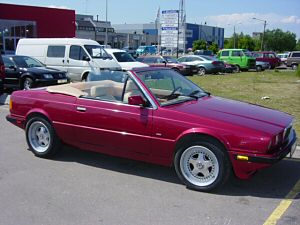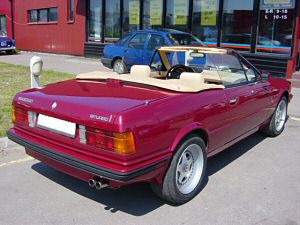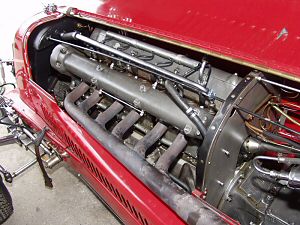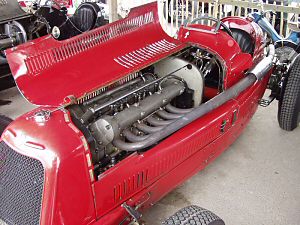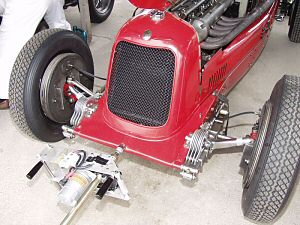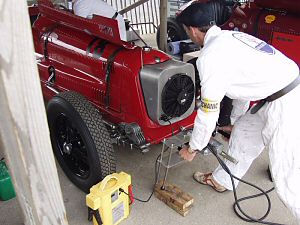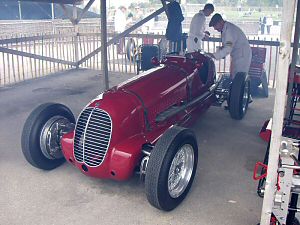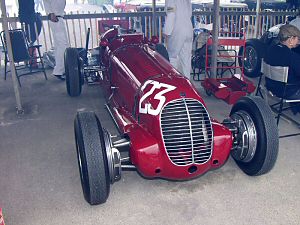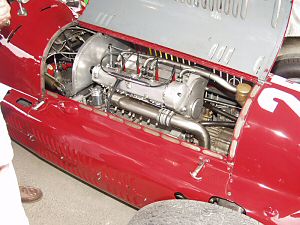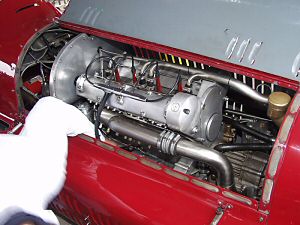| The Enthusiasts' Page | |||
| - YOU ARE NOW ON PAGE 97 | |||
 | All things 'Maserati'. News of forthcoming models, owner's cars, tips, 'Marque' reunions and the odd touch of humour! In fact anything of interest to the 'Maseratista'. |
 |
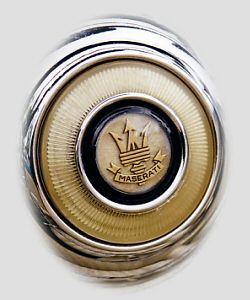 Horn button on a Maserati 3500 GT Vignale Spyder |
| You can click on some pictures for a better view!! | |||
|
|
|||||||
|
| |||||||
Michael Gans in the 1932 Maserati 4CM |
|||||||
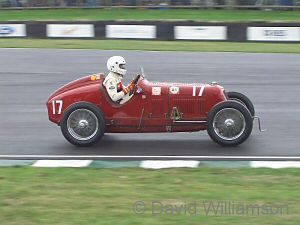 |
|||||||
|
|
|||
|
| |||
This year's event saw a splendid gathering of pre-1940 racing Maseratis ranging from a 1932 4CM to a 1939 4CL. The Tipo 4CM Following the development of the 4C (or 4CTR) and its appearance at Monza, Alfieri recognised that the car was better suited to road racing, so the development of the 4CM proceeded using the same mechanicals, but a new single-seat frame and the hydraulic braking system that had been employed on the 8C Trazione Anteriore (front wheel drive). In 1932 and 1933 the 1100 cc car did well against all competitors until from 1934 it was often outpaced by its 1500 cc rivals. Nonetheless Maserati continued to develop the series until at the end of their development with a fixed head the magic 100 hp per litre of displacement had been surpassed. In 1936 the Tipo 4CM 1100 developed by Furmanik and owned by Rovere, using a special body, was used to set a world record for its class and the outstanding power of 143 hp/litre was obtained - never having been achieved before in an automobile engine. The last car built for Lurani in 1937 had by then progressed to the latest generation chassis with independent front wheels and similar in appearance to the 6CM. The Tipo 4CL The 4CL ('L' for in line or "Linguette") was conceived by Ernesto Maserati in the beginning of 1937 as necessary to combat the Alfa 158. Ready for testing in January 1939, the 4CL had a new 'square' engine with equal bore and stroke (78x78mm) but with 4 valves per cylinder to generate the required horsepower and retain the versatility of the engine. Fitted into a frame almost the same as the 6CM the car met with success. After the war it continued to be the pacesetter and only began to wane when the Alfa's took up two-stage supercharging, which Maserati did not adopt officially until 1947. In the interim Ernesto was trying to resolve a torsional problem with the frame and began experimenting with tubular frames, which led to the 4CLT. The Tipo 8CM The definitive version of the 3000 cc Grand Prix car and replacement for the 8C 2800 and 8C 3000 was the Tipo 8CM. Utilising the engine from the 8C 3000 and the frame concept and suspension system developed for the 4CM 1100 these developments came together in the single seater - the 8CM. Until the arrival of Nuvolari in 1933 the front end of the car was stiffened by enclosing the long members of the frame in sleeves to create a box like structure. A change in the regulations requiring a larger frame (820 mm vs the 620 mm of the 4CM type frame used) which required transverse stiffening, so the body work at the front was extended to envelope the front of the frame. Most 8CM's were sold to private customers and many customer variations were made around the basic design the most notable being Whitney Straight. Two sports versions were developed; one by Taruffi and a more elegant version by Straight which was used daily in London traffic! Maserati improvements included: in 1934 engine power was increased through improved carburettion; in 1935 independent front suspension and in 1936 on a single customer car a new cylinder head, pistons and valves which lifted output to 312 bhp (104 hp/litre) and constituted a preview of the Tipo 8CTF which was to come. The Tipo 8C-34 The new international formula in 1934 was limited to vehicles with 750 kg which suited the 8CM but against the financial might of the Germans was not felt to be competitive. The search for more horsepower and reduced weight led to the 6C/34, which adopted the same bore and stroke dimensions as the 2500cc Tipo 4C 2500. Using the new production method developed for the 2500 cc with fixed cylinder head and the cylinder blocks used in groups of two, mounted on a single elektron crankcase produced a 3724 cc in-line six cylinder motor which gave 30 bhp more than the 8CM and reduced weight. The first engine was mounted on the 8CM frame (no 3012) of Nuvolari making its debut in the GP of Italy in 1934. In 1935 it was given independent front suspension via torsion bars, but nonetheless was seen as an interim car waiting on the arrival of the V8RI. The Tipo 6CM With pressure from the ERA, the 4CM 1500 whilst still competitive prompted Ernesto to take the step of building the 6CM 1500 which incorporated all the innovations present in both the V8RI and the 4CM. The new car which appeared in 1936 had the conventional frame from the 4CM and rigid rear axle, but the independent front suspension from the V8RI and the in-line 6 cylinder motor used the design of the cylinders cast in block with the head and mounted in pairs on the crankcase. After proving more than a match for the ERA, the 6CM was radically modified in 1938 with a more powerful engine, new semi-cantilever rear leaf springs, the lowering of the frame and the placement of fairings over the suspension on the side of the car to improve aerodynamics. Then in 1939, a thirdversion with changes to a taller radiator or grille cowling. At this time, which was during the construction of the 4CL and in the declining period of the 6CM, a four valve per cylinder motor (24 valve) was used in the last two cars made, but with little success in its initial outings. By 1940 experiments had begun with a naturally aspirated version of the 6CM which would lead eventually in 1946 to the 6CS/46 and the A6. POST-1950 The Tipo A6GCM After the decline in the 4CLT/48 entry into Formula 1, which had become a confrontation between Alfa Romeo and Ferrari would have been uneconomic. Maserati instead focused on Formula 2 in which the A6GCS had also run. Two new cars were built initially - each A6GCM utilised a dual overhead camshaft, single ignition engine with 160 bhp, derived from the A6GCS and on a chassis similar to the 4CLT/48. Constructed but not utilised, these cars were sold to the Bandereintes team. In 1952 a transitional car appeared with a square engine75x75 mm, dual ignition and an increase of power to 180 bhp, but the car had fundamental problems with the chassis. In 1953 under the guidance of Giachino Columbo there was a total revision, the engine was given new dimensions 76.2x72mm and a torsion resistant chassis using a trellis structure. Concerns about the rear axle were resolved by anchoring it to to the frame with an integrating triangle of reaction bars and seven-leaf semi-cantilevered leaf springs. Larger new front brakes with deep radial fins were added. A more elliptic shape for the front cowling and with other minor body variations its saw its first event at Naples in 1953. Designated by some as the A6SSG it was in fact the definitive AGCM which laid the framework for the 250F which would follow. |
|||
| AND IF YOU'RE STILL WONDERING WHERE THAT MASERATI 8CM WAS OFF TO: | |||
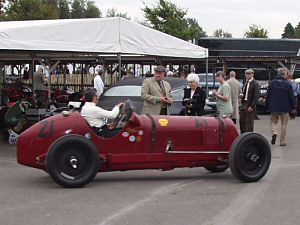 1934 Maserati Tipo 8CM #3020 |
|||
| THE RACING MASERATIS OF THE THIRTIES | |||
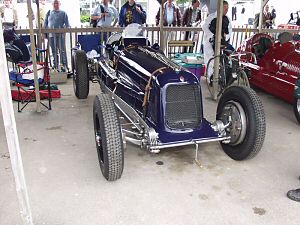 1934 Maserati Tipo 8CM - #3013 |
 |
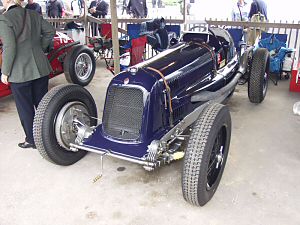 | |
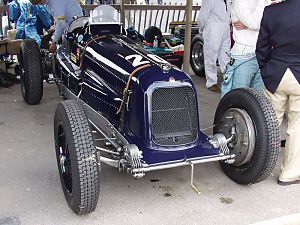 |
 |
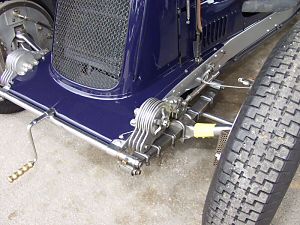 | |
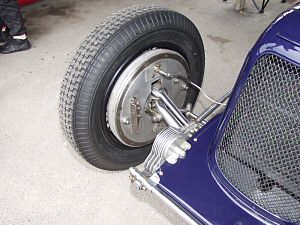 |
 |
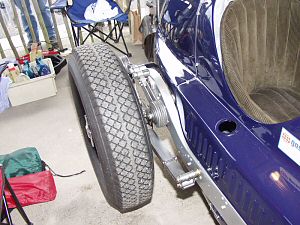 | |
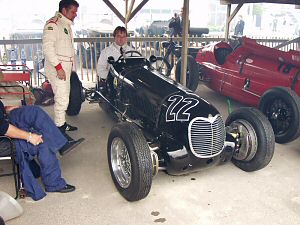 1937 Maserati Tipo 6CM #1547 |
 |
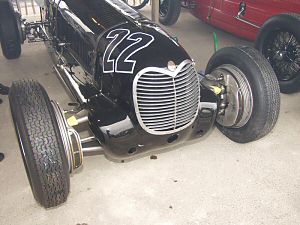 | |
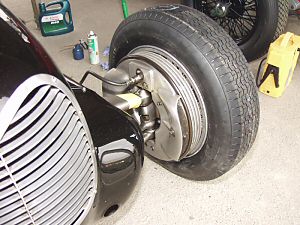 |
 |
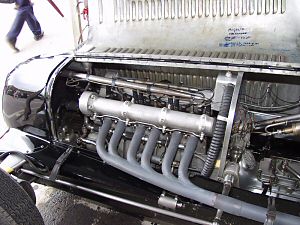 | |
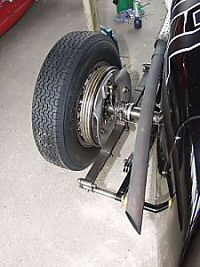 |
|
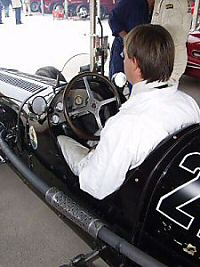 |
|
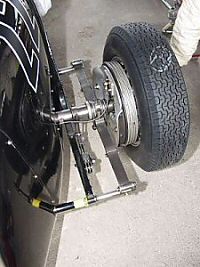 | |||
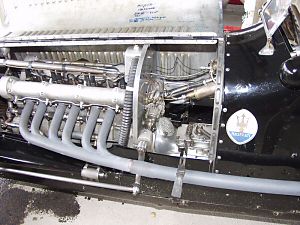 |
 |
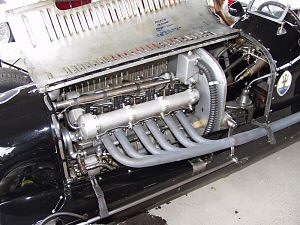 | |
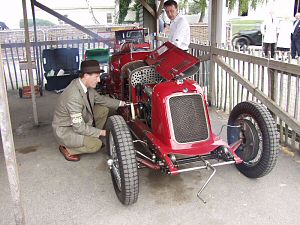 1932 Maserati Tipo 4CM 1100 #1119 |
 |
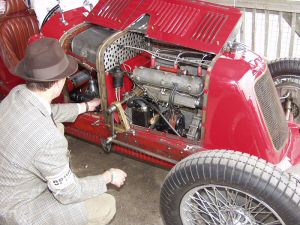 | |
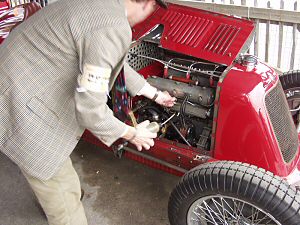 |
 |
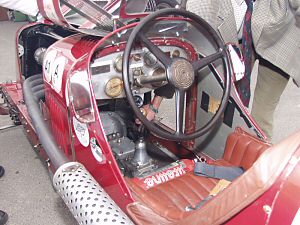 | |
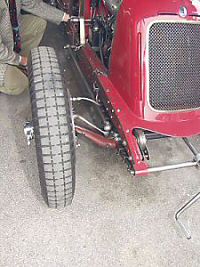 |
|
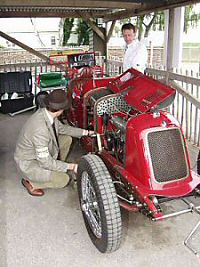 |
|
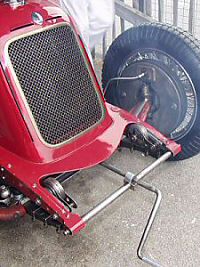 | |
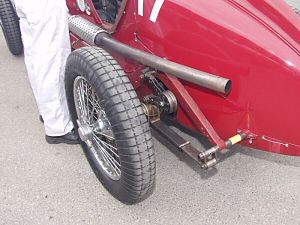 |
 |
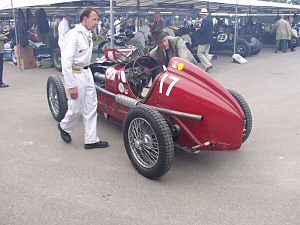 | |
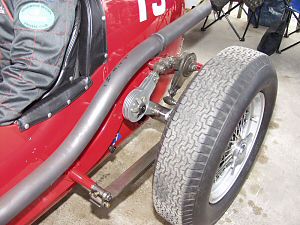 1934 Maserati Tipo 8CM #3009 |
 |
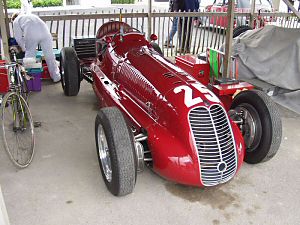 1939 Maserati Tipo 4CL #1566 | |
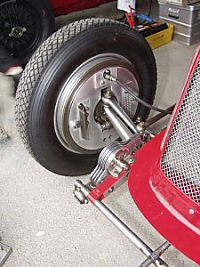 1934 Maserati Tipo 8CM #3009 |
|
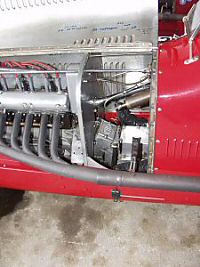 1934 Maserati Tipo 8CM #3009 |
|
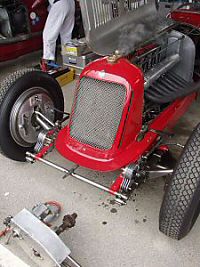 1934 Maserati Tipo 8CM #3009 | ||
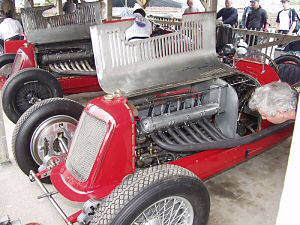 1934 Maserati Tipo 8CM #3009 |
 |
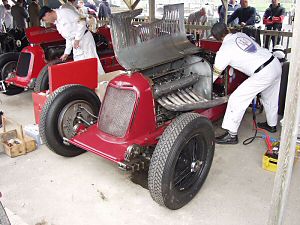 1934 Maserati Tipo 8CM #3020 | |
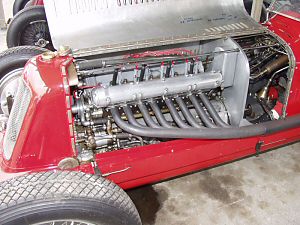 1934 Maserati Tipo 8CM #3009 |
 |
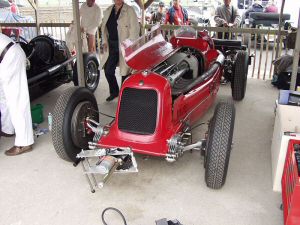 1934 Maserati Tipo 6C-34 #3023 | |
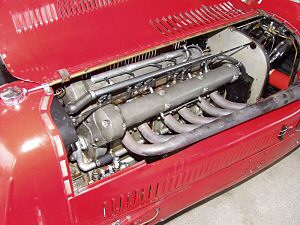 1934 Maserati Tipo 6C-34 #3023 |
 |
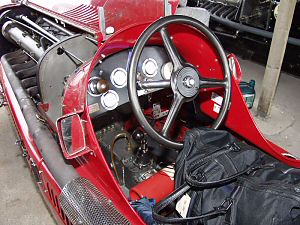 1934 Maserati Tipo 6C-34 #3023 | |
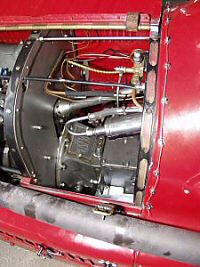 1934 Maserati Tipo 6C-34 #3023 |
|
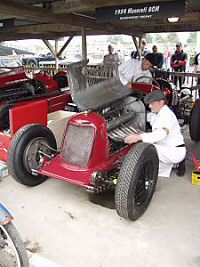 1934 Maserati Tipo 8CM #3020 |
|
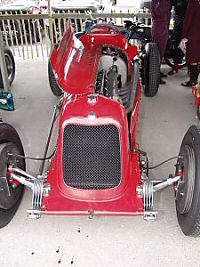 1934 Maserati Tipo 6C-34 #3023 |
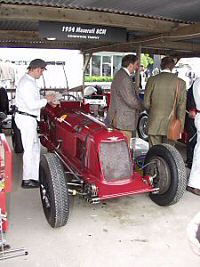 1934 Maserati Tipo 8CM #3020 |
|
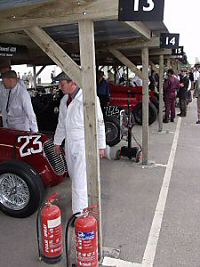 The pre-1940 Maserati paddock |
|
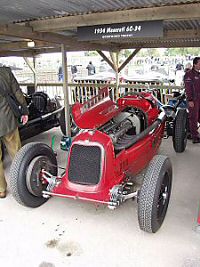 1934 Maserati Tipo 6C-34 #3023 | |
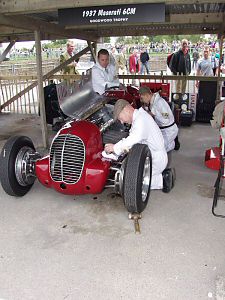 1937 Maserati Tipo 6CM #1513 |
|
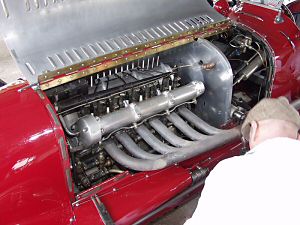 1937 Maserati Tipo 6CM #1513 |
|
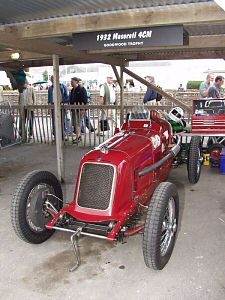 1932 Maserati Tipo 4CM 1100 #1119 | ||
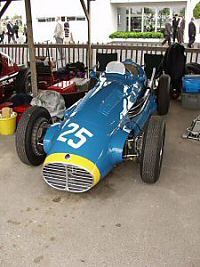 1953 Maserati Tipo A6GCM |
|
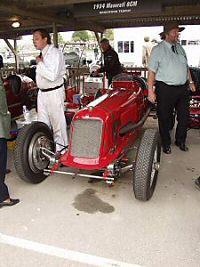 1934 Maserati Tipo 8CM #3009 |
|
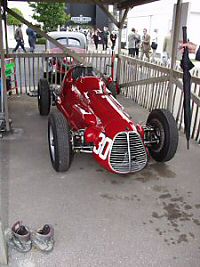 1951 Maserati Tipo A6GCM | ||
| ....ROLL ON THE GOODWOOD REVIVAL 2007!! BE SURE NOT TO MISS IT!! | ||||
| MORE FOR THE ENTHUSIAST | ||
 | ||
| To enter Enrico's Maserati Pages CLICK
HERE! Copyright: Enrico's Maserati Pages - © 2006. All rights reserved. |
